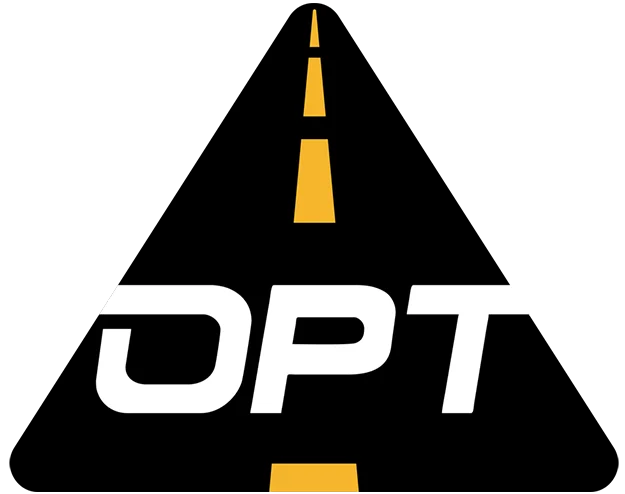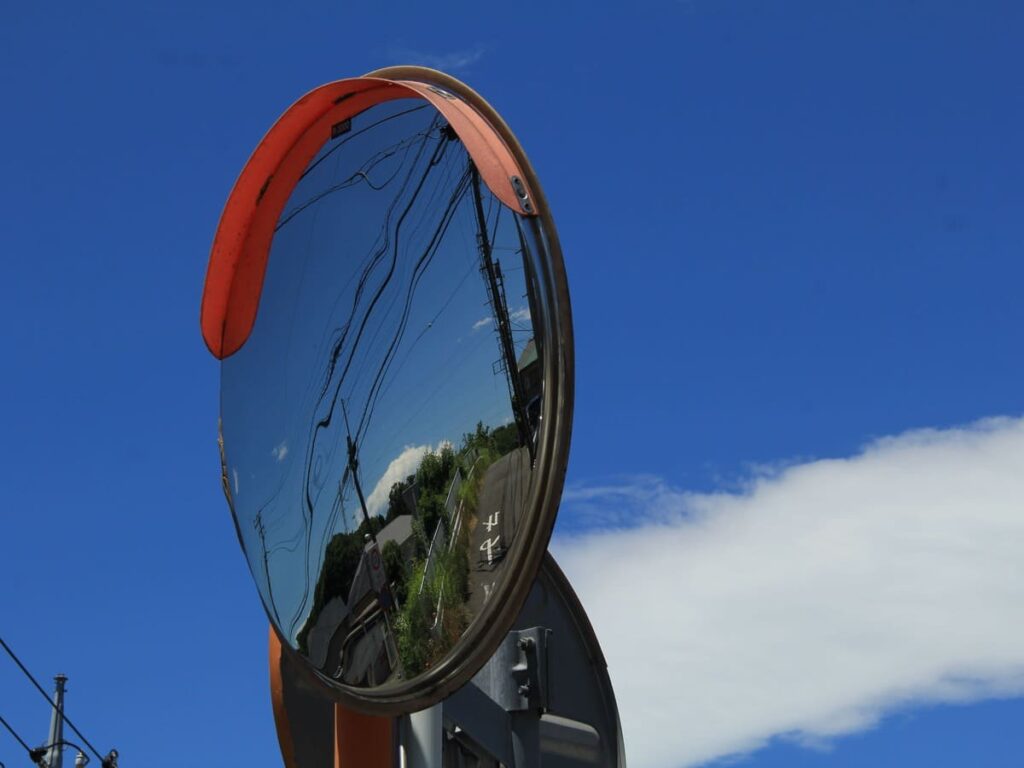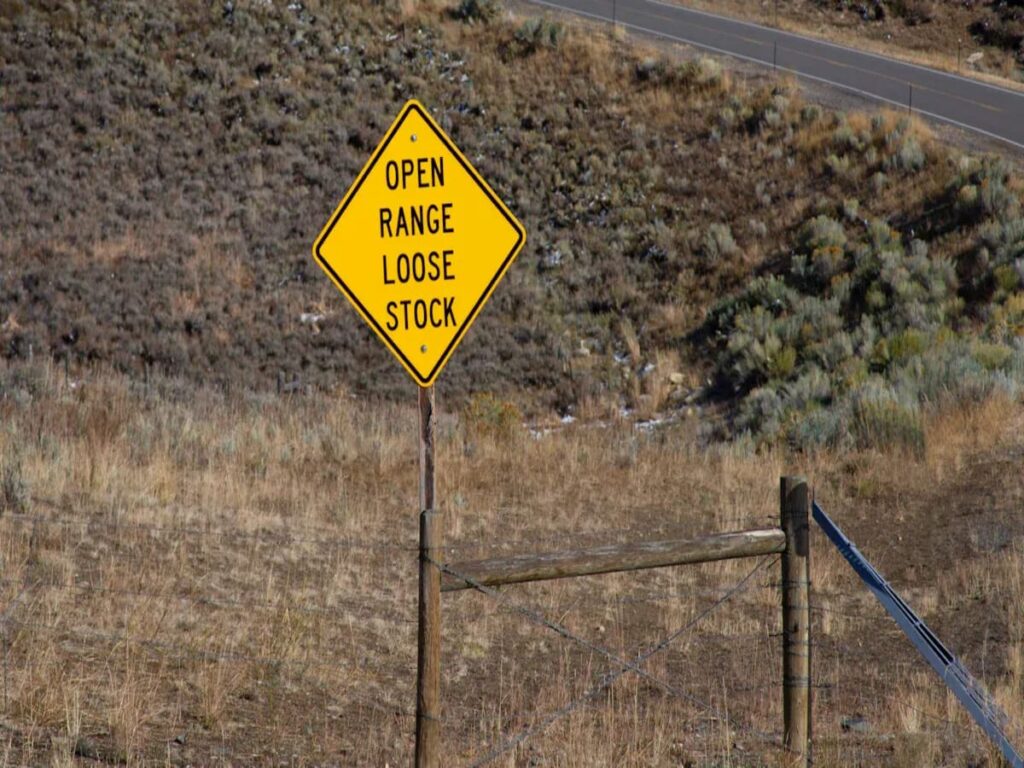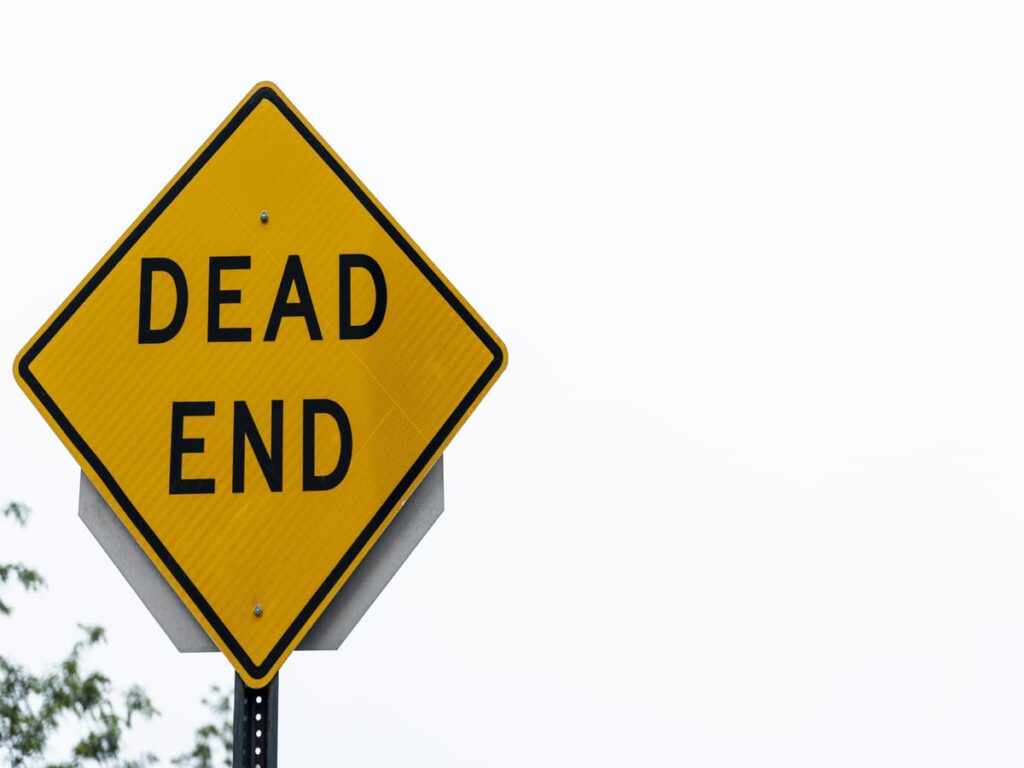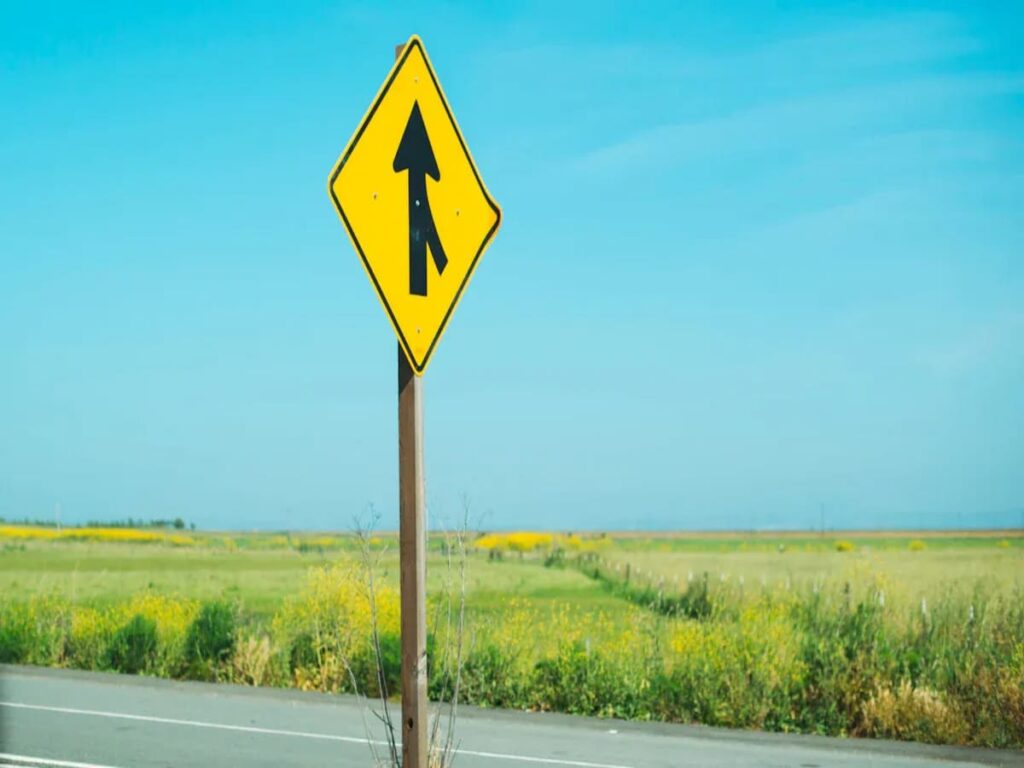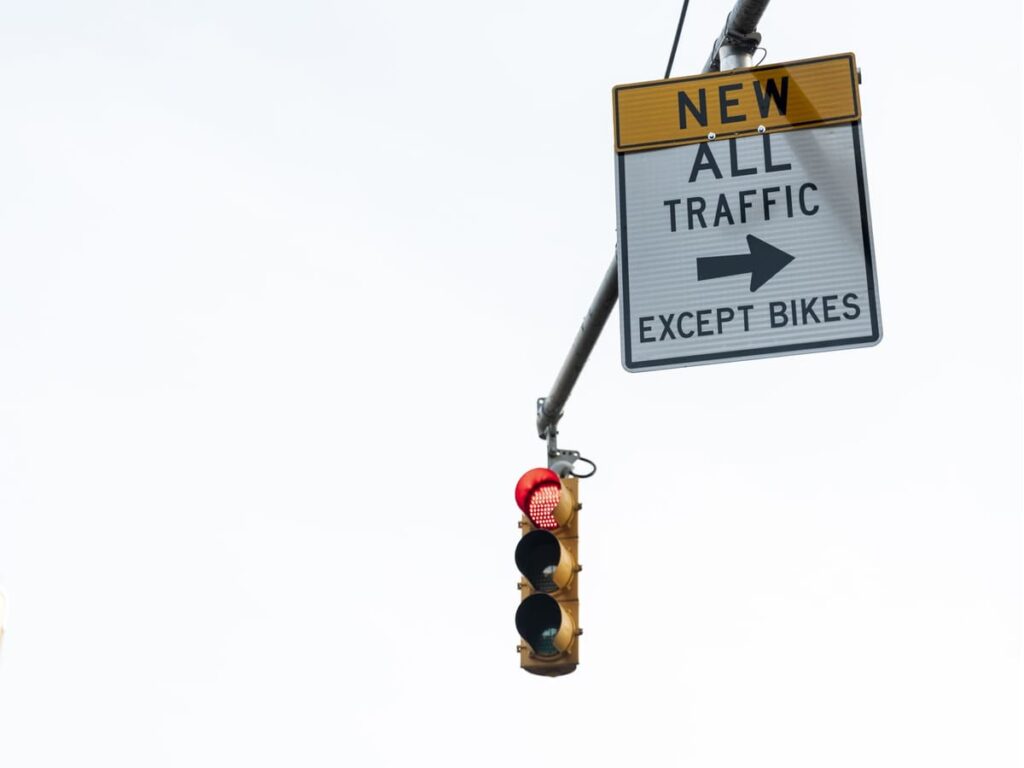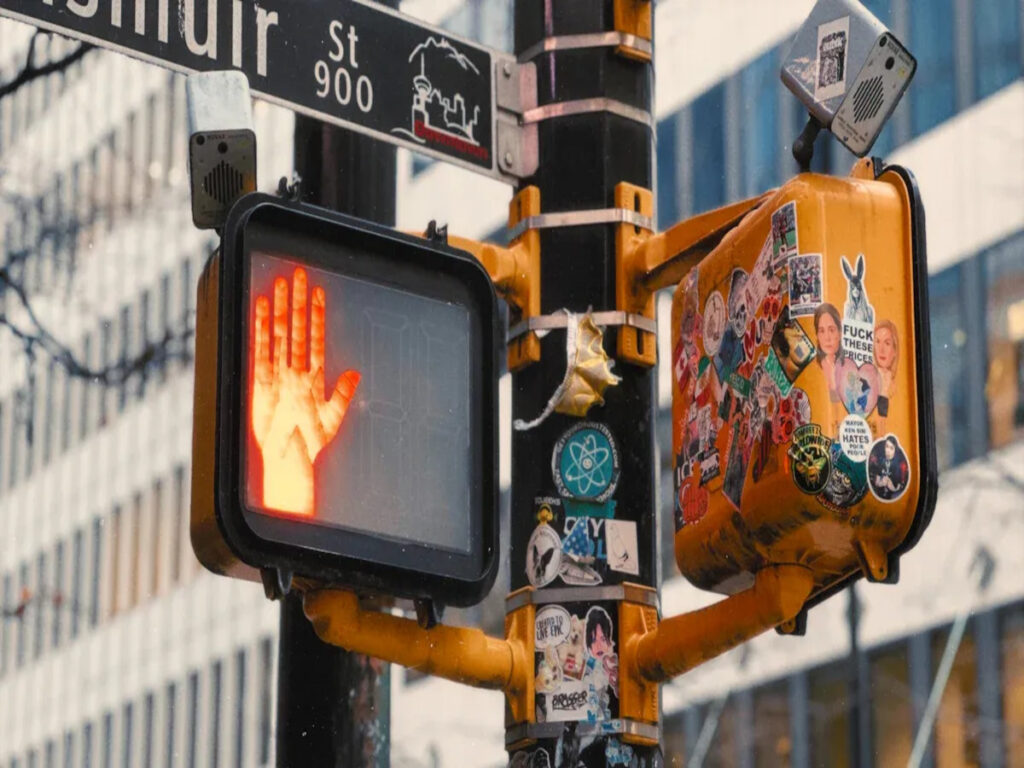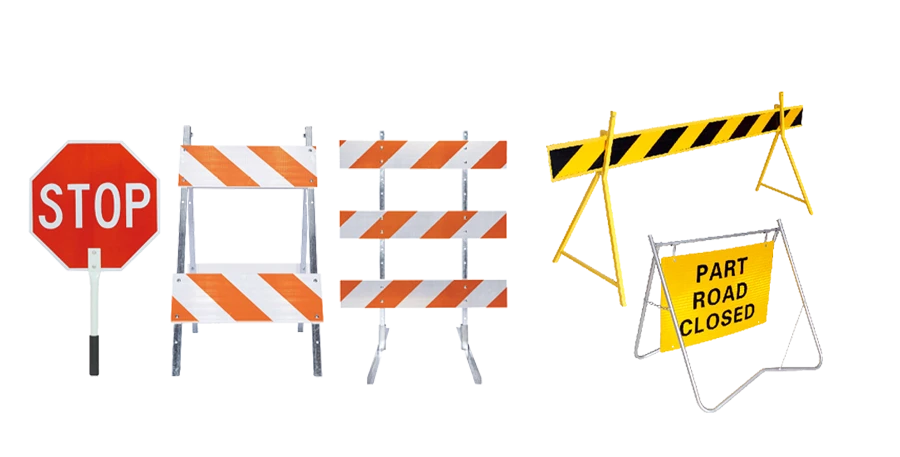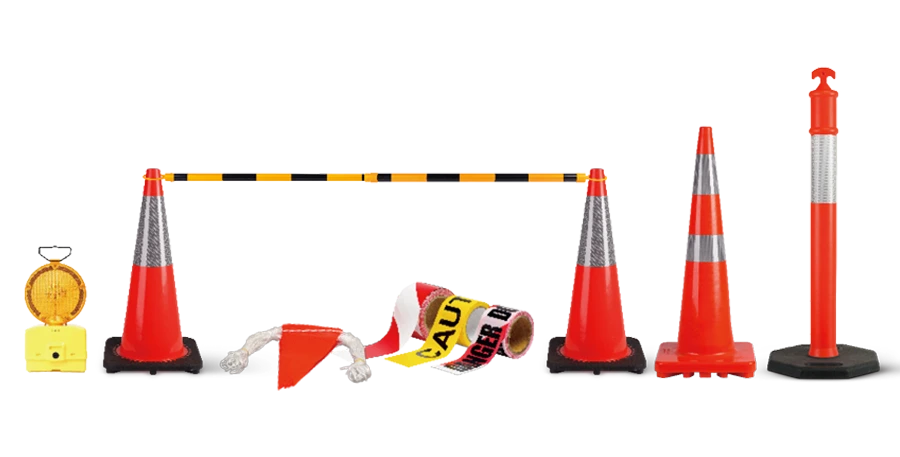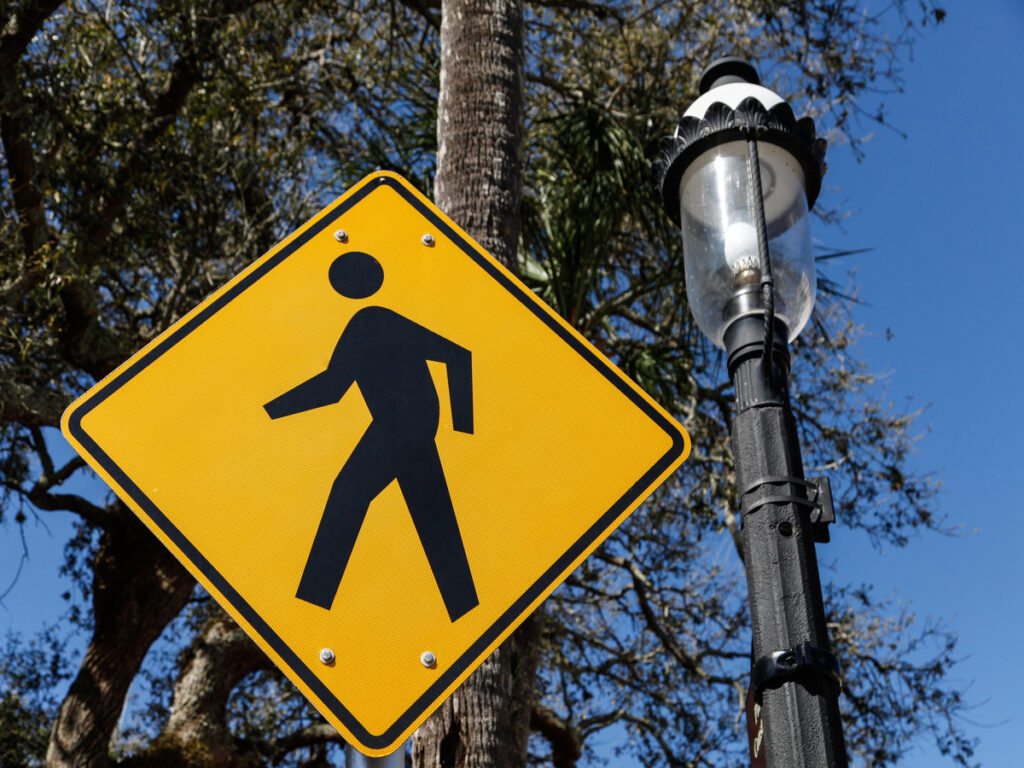
Straßenschilder sind wichtig, um den Fahrern zu helfen und Straßen sicher zu halten. Die Größe der Standard -Straßenschilder sorgt dafür, dass jeder sie effektiv sehen und lesen kann. Zum Beispiel, Straßenschilder sollten lesbar sein von 30 Füße für jeden Zentimeter Buchhöhe. Nachts, eine Helligkeit von zumindest 35 CD/m² hilft den Menschen, besser zu sehen, Besonders auf dem Land. Diese Regeln halten überall einheitlich bei Straßenschildern Größe, sie leicht zu verstehen und die Unfallrisiken zu senken. Egal, ob Sie in einer Stadt oder in der Landschaft sind, Die Größe der richtigen Straßenschilder ist der Schlüssel zur klaren Kommunikation und zur Verwaltung des Verkehrs.
OPTRAFFIC provides high-quality road signs that meet all standard size and visibility requirements. OPTRAFFIC traffic safety products ensure safety and compliance for roads in any environment, whether urban or rural.
Contact us today to explore our full range of road safety solutions.
Key Takeaways
- Street signs have standard sizes to keep drivers safe.
- Larger signs are simpler to read from far away.
- Right-sized signs prevent confusion and make traffic smoother.
- Reflective signs are easier to see at night or in rain.
- Using MUTCD sign sizes avoids problems and keeps roads safer.
Standard Road Sign Sizes: What You Should Know
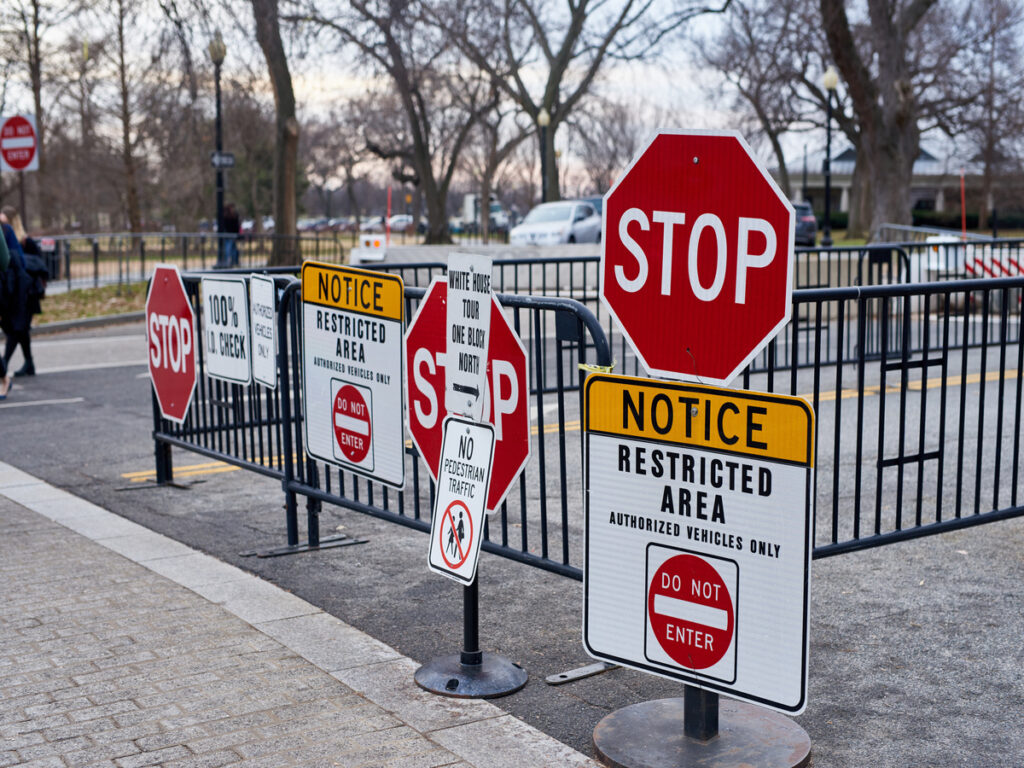
Common Sizes for Road Signs
Road signs are essential for maintaining smooth traffic flow and road safety. The size of each road sign is carefully chosen to ensure it is clearly visible and legible to drivers. Verständnis road sign size is crucial for ensuring that signs effectively convey their message, whether guiding drivers to their destination, warning of hazards, or enforcing traffic laws. Different types of road signs serve different functions, and their sizes vary depending on their purpose, Standort, und Verkehrsbedingungen. Unten, we explore the sizes of various common road signs and why they matter for safe driving.
1. Stop Sign Size: 30″ x 30″ for Maximum Visibility and Safety
A Stoppschild is one of the most crucial traffic control signs on the road. It is used to ensure that drivers come to a complete stop before proceeding, Dies hilft, Unfälle zu verhindern, particularly at intersections. Der standard size for stop signs Ist 30 Zoll vorbei 30 Zoll, as recommended by the Handbuch zu einheitlichen Verkehrskontrollgeräten (MUTCD). This size is effective for providing maximum visibility and allowing drivers to react in time.
In low-traffic areas or parking lots, a smaller 24 Zoll vorbei 24 Zoll stop sign is often used. This size is still effective in these environments where speeds are slower. In Hochverkehrsgebiete or at Hochrisikokreuzungen, larger 36 Zoll vorbei 36 Zoll stop signs are often used to improve visibility from further distances, ensuring drivers have more time to react.
2. Street Name Sign Size: Ensuring Legibility with 6″ Briefhöhe
Street name signs are vital for helping drivers navigate roads, especially in urban areas or unfamiliar neighborhoods. To ensure legibility, Die MUTCD recommends that the letter height of street name signs should be at least 6 Zoll. The width of the sign should generally not exceed 6 Zoll.
In cities with high-speed traffic or poor visibility, larger street name signs may be necessary to improve readability. For residential areas or less trafficked roads, smaller street name signs can be used, but they still need to meet the minimum letter height to ensure readability. Additional text, such as street type (Z.B., Avenue, Street), may be smaller, but should not be less than 3 Zoll hoch.
3. Yield Sign Size: Triangle-Shaped Signs with Varying Dimensions
A yield sign is another important road sign, typically shaped like a triangle. Yield signs indicate that drivers must give the right of way to other vehicles or pedestrians. While the size of a yield sign can vary, it generally ranges from 24 Zoll vorbei 24 Zoll in low-speed zones to 36 Zoll vorbei 36 Zoll in high-traffic areas or on highways.
In higher-traffic or more dangerous locations, such as busy intersections, larger yield signs ensure that drivers can notice the sign in time to adjust their speed or yield appropriately.
4. Speed Limit Sign Size: 24″ x 30″ for Clear Communication
Geschwindigkeitsbegrenzungszeichen are essential for controlling vehicle speeds, ensuring that drivers maintain safe speeds in different environments. The standard size for most Geschwindigkeitsbegrenzungszeichen Ist 24 Zoll vorbei 30 Zoll, which is large enough to be seen clearly by drivers on urban streets.
On highways or rural roads where vehicles travel at higher speeds, the size of the speed limit sign may increase to ensure it can be seen from a distance. These larger signs are especially important in areas with long straightaways or wide open roads where drivers may not immediately see smaller signs.
5. Warning Sign Size: 24″ x 24″ bis 36″ x 36″ for Hazards
Warnzeichen are used to alert drivers about potential hazards ahead, such as sharp turns, Fußgängerübergänge, or slippery conditions. Diese Zeichen sind normalerweise diamond-shaped and can vary in size. Warnzeichen commonly range from 24 Zoll vorbei 24 Zoll Zu 36 Zoll vorbei 36 Zoll, depending on the severity of the hazard.
Zum Beispiel, on winding roads or near sharp turns, A 36-inch by 36-inch warning sign is often used to ensure it is visible from a distance. In areas with less serious hazards, smaller 24-inch by 24-inch warning signs may be used.
6. Guide Sign Size: 36″ x 48″ for Directions and Exits
Leitschilder, such as exit signs or directional signs, help drivers navigate unfamiliar roads. These signs need to be large enough to be seen clearly, especially on highways or busy intersections. The standard size for Leitschilder liegt typischerweise zwischen 36 Zoll vorbei 48 Zoll or larger, depending on the complexity of the direction or exit information.
Zum Beispiel, highway exit signs that provide critical directional information are usually larger so drivers can read them in time to make safe decisions about lane changes or exits.
7. Construction Zone Sign Size: Large and Visible for Safety
In Bauzonen, temporary traffic signs are used to alert drivers to changes in traffic flow, reduced speed limits, oder Fahrspursperrungen. Diese Zeichen sind normalerweise 36 Zoll vorbei 36 Zoll or larger to ensure high visibility in these often hazardous areas. The larger size helps ensure that drivers notice the signs promptly, which is vital for maintaining safety in construction zones.
Here’s a quick reference guide to help you understand the recommended road sign sizes for various types of signs:
| Zeichentyp | Suggested Size |
|---|---|
| Stoppschild | 30″ x 30″ (Standard), 24″ x 24″ (Minimum), 36″ x 36″ (high-risk areas) |
| Street Name Sign | Breite: 6″ or less; Höhe: 6″ (Minimum) |
| Ertragszeichen | Triangle shape; Size varies from 24″ x 24″ bis 36″ x 36″ |
| Speed Limit Sign | 24″ x 30″ (Standard), larger for highways |
| Warnzeichen | 24″ x 24″, 36″ x 36″ (depending on hazard) |
| Leitschilder | 36″ x 48″ or larger, depending on highway conditions |
| Construction Signs | Typically 36″ x 36″ or larger for high visibility |
Why Sizes Matter for Seeing and Reading Signs
The size of a sign affects how well people can see it. Größere Anzeichen sind leichter aus der Ferne zu lesen, especially for fast drivers. A 30-inch stop sign is big enough to notice before reaching an intersection. Kleinere Zeichen, used in cities, are made for closer distances but still stay clear.
Having the same sign sizes everywhere also helps drivers. Whether you’re in a city or on a country road, matching sizes make signs easy to spot and understand. This reduces mistakes and keeps everyone safer.
Picking the Best Sign Size for Different Roads
When it comes to road sign sizes, one size does not fit all. The appropriate size for each sign depends heavily on the type of road, Verkehrsbedingungen, and the speed at which vehicles are traveling. Der Handbuch zu einheitlichen Verkehrskontrollgeräten (MUTCD) provides guidelines that help ensure signs are visible and legible, no matter where they are placed.
Road Sign Sizes for Different Environments: Stadt, Suburb, and Highway
City Signs: Smaller for Shorter Distances
In city environments, traffic typically moves slower, and drivers are closer to signs. Infolge, city signs can be smaller but still need to be clear and easy to read. Zum Beispiel, street name signs in cities are often thin and compact, with the height of the sign varying depending on the length of the street name. The idea is to keep signs visible and legible at shorter viewing distances without overwhelming the visual space in crowded urban settings.
Beispiel: A street name sign in a densely populated city might have a height of 6 Zoll for the text and a width that fits within the standard 6-Zoll range, ensuring it’s visible from a reasonable distance, even with parked cars or other visual obstructions.
Suburban Signs: Bigger for Faster Speeds
In suburban areas, where vehicles tend to travel faster than in cities but not as fast as on highways, signs need to be larger to ensure they can be seen from a greater distance. Größere Zeichen help drivers notice important information—like speed limits or street names—before they are too close to react. These signs are generally sized between those of city and highway signs to accommodate faster speeds and greater distances.
Beispiel: In suburban areas, A Geschwindigkeitsbegrenzungszeichen might be 24 Zoll vorbei 30 Zoll, ensuring it can be read by drivers who are traveling at speeds of 30 Zu 45 Meilen pro Stunde.
Autobahnschilder: The Largest for Maximum Visibility
Highway signs need to be the largest because vehicles are traveling at high speeds. Drivers need to see and understand highway signs early to make safe decisions, such as slowing down, Verschmelzung, or exiting. Zum Beispiel, A highway stop sign might be 36 Zoll vorbei 36 Zoll, providing ample visibility and legibility from a distance, which is critical for highway safety. Auf der anderen Seite, A parking lot stop sign can be as small as 24 Zoll vorbei 24 Zoll, since vehicles travel at much slower speeds in these areas.
Beispiel: A highway exit sign may be 48 Zoll vorbei 72 Zoll to ensure that drivers can clearly see the exit instructions from a long distance, allowing them ample time to adjust their speed and position on the road.
Factors That Influence Road Sign Size
The optimal road sign size is influenced by several factors, ensuring each sign communicates effectively in its specific environment. Below are the key considerations:
| Faktor | Erläuterung |
|---|---|
| Nachrichtenlänge | Longer messages require larger signs to maintain legibility. Auf Autobahnen, zum Beispiel, A guide sign with multiple exit destinations might need to be 48 Zoll vorbei 72 Zoll to accommodate all the information clearly. |
| Distance for Reading | Signs need to be large enough to be readable from a safe distance. Auf Hochgeschwindigkeitsstraßen, wie Autobahnen, exit signs Und Geschwindigkeitsbegrenzungszeichen must be seen from mindestens 500 Füße away. |
| Road Conditions | Factors like Kurven, Hügel, oder enge Räume may affect sign size or placement. Zum Beispiel, A sharp curve warning sign might be larger than usual to ensure it’s visible in areas with poor sightlines. |
Real-World Example of Sign Size Adjustments
In areas with scharfe Kurven, such as mountainous roads or winding highways, Warnzeichen may be larger to compensate for the limited visibility that curves create. Winding road signs oder slippery road signs may be 36 Zoll vorbei 36 Zoll instead of the standard 24 Zoll vorbei 24 Zoll to ensure drivers have enough time to react.
Ähnlich, in areas with Hügel, road signs might need to be placed at a higher point to be visible from a greater distance. This adjustment may also call for slightly larger signs to ensure visibility over the crest of a hill.
The Effect of Road Sign Size on Driver Response Time and Traffic Flow
How Size Affects Driver Reaction Time
The size of a road sign is very important. Bigger signs are easier to see from far away. This gives you more time to read and react. Zum Beispiel, a correctly sized stop sign helps you notice it sooner. This is helpful when driving fast, so you can slow down safely.
Smaller signs are harder to notice, vor allem in geschäftigen Bereichen. Crowded streets or intersections can make them even less visible. If you don’t see a sign in time, accidents are more likely. Signs that are the right size help you react quickly. This keeps you and others safe while driving.
Impact of Properly Sized Signs on Traffic Flow
Signs with the right size also keep traffic moving smoothly. When you can read a sign early, you can prepare for changes ahead. This helps avoid sudden stops or quick lane changes, which can cause traffic jams.
Auf Autobahnen, where cars go fast, big signs are very important. They give clear directions early, so you can adjust without confusion. Small signs can cause problems, like sudden moves that slow traffic and cause crashes. Using the correct sign sizes helps traffic flow safely and without delays.
Why You Should Choose the Right-Sized Road Signs for Your Project
Avoiding Legal and Safety Problems
Picking the right size for road signs is important. It’s not just about being seen but also folgende Regeln. Local laws and MUTCD rules set specific sizes for signs like stop and yield signs. Zum Beispiel, a standard stop sign is 30 Zoll vorbei 30 Zoll. Smaller ones might be okay in slow-speed areas. Ignoring these rules can lead to fines or legal trouble.
Correctly sized signs help prevent accidents too. A small stop sign might be missed, especially in busy or fast areas. Dies kann zu Abstürzen führen. Using the right sizes for stop and yield signs helps drivers notice them in time. Dies senkt die Wahrscheinlichkeit von Unfällen. Following these rules not only avoids legal issues but also keeps people safe.
Why Reflectivity and Durability Matter
Reflective and durable signs are very important, Besonders nachts. Studies show reflective materials make signs easier to see in the dark. Zum Beispiel, reflective Chevron signs were 286% heller bei 225 Meter. This helps drivers spot signs sooner, Straßen sicherer machen.
Driving at night is more dangerous, with higher fatality rates than during the day. Reflektierende Zeichen, especially in colors like red and yellow, reduce these risks. They make sure signs stay visible in bad weather or low light.
Durability is also key. Signs face tough weather like rain and snow. They need to stay strong and clear to work well. High-quality materials keep signs useful for a long time. Dies bedeutet, dass weniger Ersatz benötigt werden. Investing in durable, reflective signs improves safety and meets local rules.
Standard street sign sizes are important for safety and clarity. Folgt dem Handbuch zu einheitlichen Verkehrskontrollgeräten (MUTCD) keeps signs consistent. Properly sized signs are easier to see and understand. They help reduce confusion and improve traffic flow, Besonders auf schnellen Straßen. While better sign standards haven’t greatly lowered all accidents, they help in busy spots like intersections. Picking the right size for your project follows MUTCD rules. It also helps drivers react faster, die Straßen für alle sicherer machen.
FAQ
What is the standard size for street signs?
Der standard size for street signs varies depending on the type of sign and its location. Jedoch, Die Handbuch zu einheitlichen Verkehrskontrollgeräten (MUTCD) sets specific guidelines for most street signs in the United States.
- Regulatorische Zeichen, such as stop signs or speed limit signs, typically have a standard size of 24 Zu 30 inches in diameter.
- Warnzeichen, wie zum Beispiel Ertragszeichen, generally have dimensions ranging from 24 Zu 36 Zoll.
- Street name signs and directional signs typically use a size range of 18 Zu 30 Zoll, depending on the location and visibility requirements.
Proper sizing ensures the signs are visible from a distance, allowing drivers to make informed decisions in time to react to road conditions.
Why does the size of road signs matter?
The size of road signs is crucial for safety and compliance. Larger signs are easier to see from further distances, which is particularly important on highways and busy intersections. Properly sized signs help drivers quickly identify important road information, such as speed limit changes, Stoppschilder, and yield signs, especially in low visibility conditions like fog or rain.
Zusätzlich, the traffic sign size must comply with local regulations to ensure that the signage is legally enforceable. Incorrectly sized signs can lead to confusion and may not be recognized by drivers, leading to potential accidents or fines.
What are the standard stop sign size dimensions?
The standard stop sign size typically follows the MUTCD guidelines. For standard stop signs, the most common size is 30 inches in diameter, though this can vary based on location, such as urban vs. ländliche Gebiete. In urban areas where traffic moves at slower speeds, a smaller stop sign (24 Zoll) may be used. Jedoch, 30 inches is considered the industry standard to ensure maximum visibility.
The stop sign size specifications are critical for ensuring the sign is visible to drivers even from a distance, allowing enough time to stop safely at intersections.
What is the standard speed limit sign size?
The standard speed limit sign size is generally around 24 Zoll vorbei 30 inches for residential areas and smaller roads. Jedoch, for highways and high-traffic areas, the size may increase to 30 Zoll vorbei 36 Zoll. This ensures that drivers have sufficient time to notice and comply with the speed limits, especially on high-speed roads.
What is the standard yield sign size?
The yield sign size generally follows the MUTCD recommendations, mit 24 Zu 36 inches being the most common size. The size of the yield sign ensures that it is noticeable to drivers approaching intersections or merging lanes, providing ample time to slow down and yield as necessary. Larger yield signs are usually used in high-speed traffic areas to improve visibility.
What are the typical traffic sign sizes for different road types?
Traffic sign sizes vary significantly based on the type of road and traffic flow. Zum Beispiel:
- Autobahnen und Autobahnen typically require larger traffic signs (Z.B., speed limit sign size up to 36 Zoll vorbei 48 Zoll) to accommodate faster-moving vehicles.
- Residential roads often use smaller sizes, typically between 24 Zu 30 Zoll, for most regulatory and warning signs.
The choice of size ensures that drivers can easily identify signs at appropriate distances, taking into account the speed and type of road they are traveling on.
